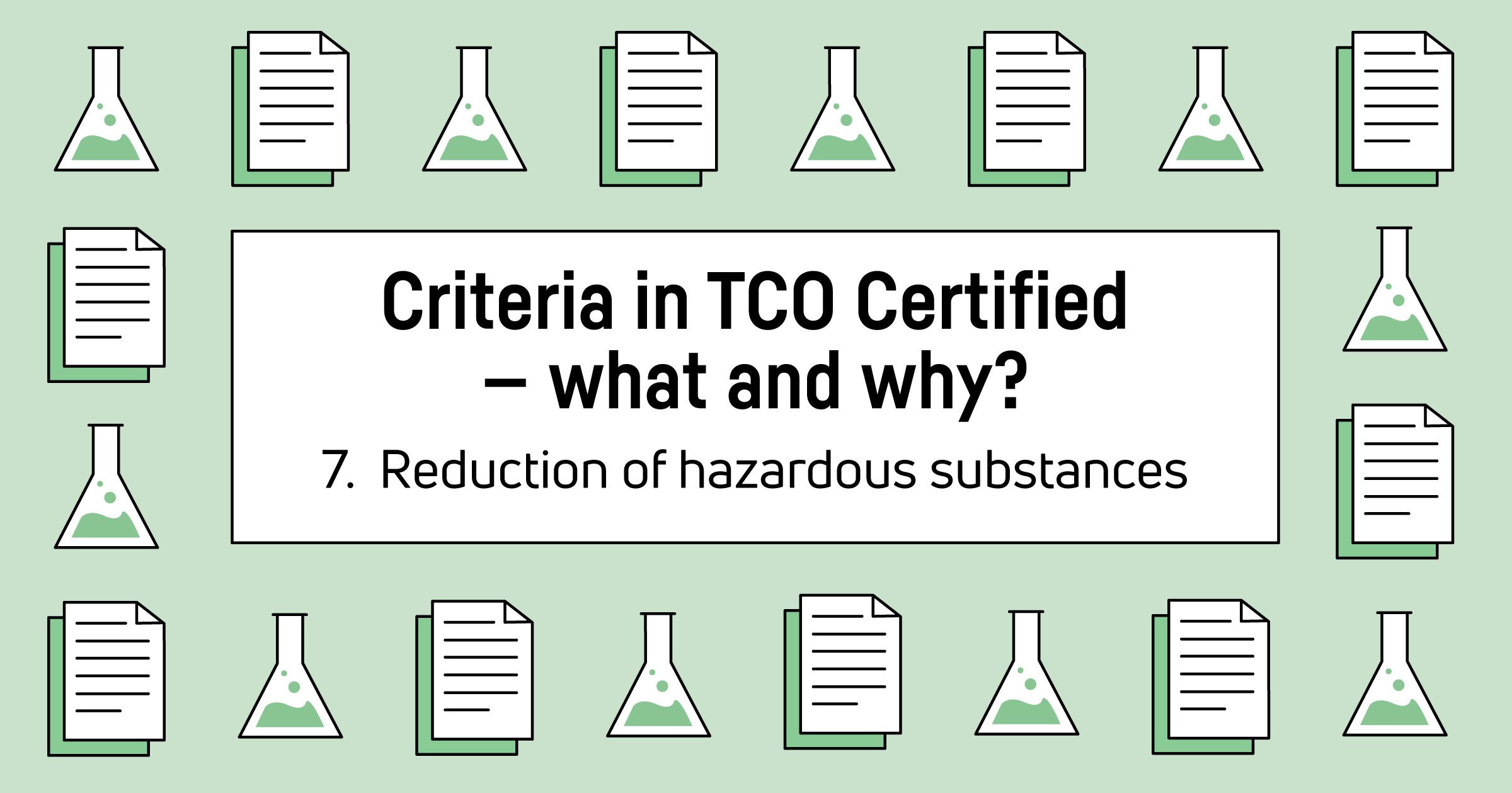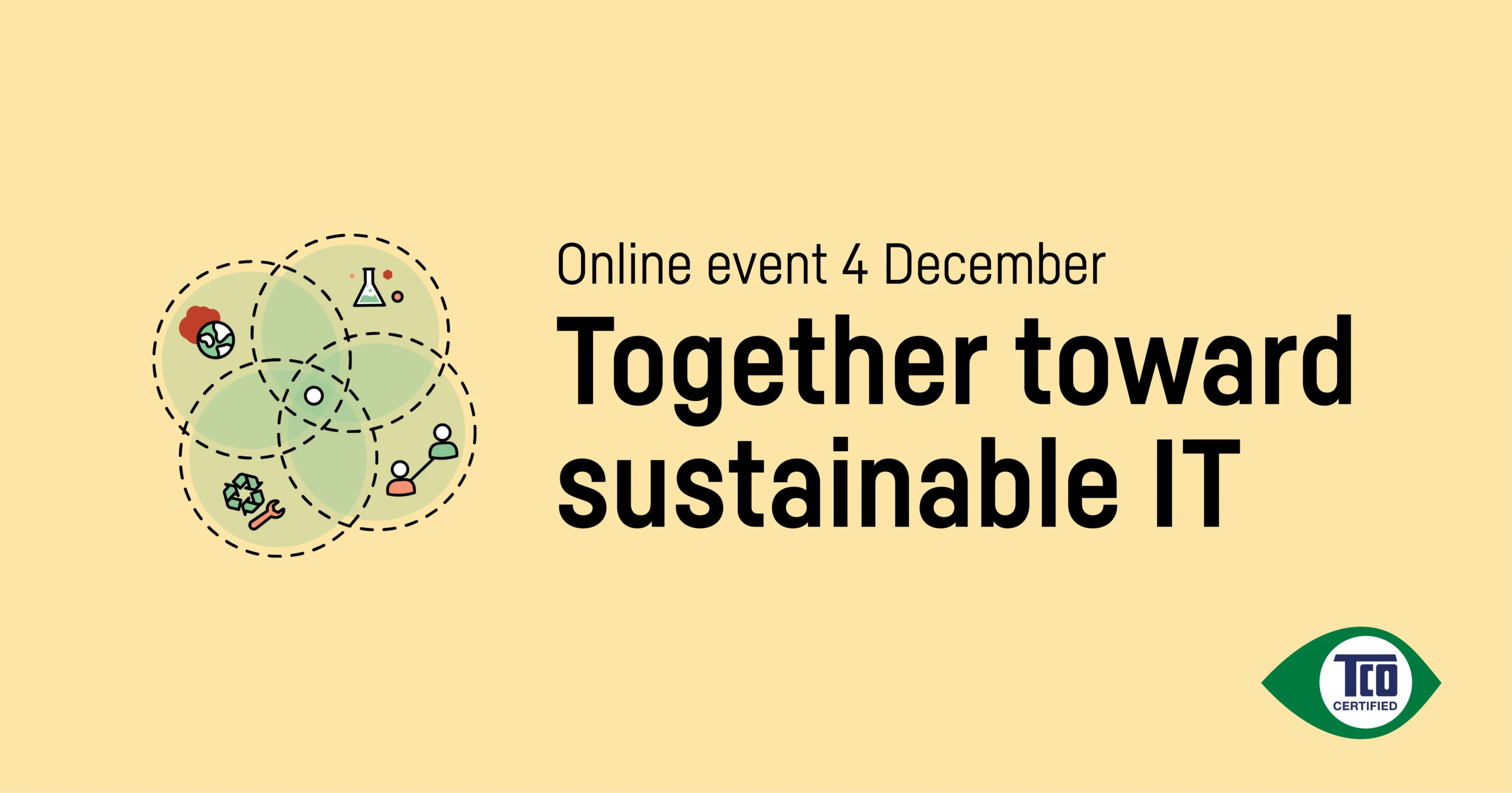Hazardous substances used in IT products are a risk to human health and the natural environment. Legislation is lagging and focuses on banning substances but the substitutions can be just as hazardous, or even worse. TCO Certified drives transparency and knowledge-sharing, developing pathways to safer alternatives.
No one knows how many chemicals are in use today. What we do know is that very few of these substances have been studied for their impact on humans and the environment. Two examples of potentially hazardous substances are plasticizers and flame retardants, often used in components, cables and other plastic parts. These substances risk leaking out in the natural environment, both in connection with manufacturing, and when products and their packaging are incinerated, placed in landfill or recycled in an improper way.
Criteria in TCO Certified — what and why?
This series of articles cover the eight criteria areas in TCO Certified. We go through the most critical sustainability challenges connected to IT products and how you can reduce the risks by including TCO Certified in procurement. All criteria are mandatory, and compliance with criteria is always independently verified.
Keeping hazardous substances out of products is important also from a circular perspective. Contaminated materials cannot be responsibly recycled and reused in new products, and risk therefore being incinerated or discarded, adding to the enormous e-waste problem.
Our approach: guiding the IT industry to safer alternatives
For a long time, TCO Certified has restricted the use of harmful substances with criteria that go beyond RoHS. However, simply banning substances isn’t enough. A banned substance may be replaced with another that is equally harmful, or potentially even worse. Therefore, we need better information about substances before they are being used. With TCO Certified, a chemical is considered a high risk until it is proven to be otherwise. GreenScreen® for Safer Chemicals is used to identify a pathway to safer alternatives.
Reduction of hazardous substances criteria focus on:
- Reducing or eliminating the use of hazardous substances in IT products and their packaging, beyond RoHS.
- Requiring that all flame retardants and plasticizers are assessed by an independent toxicologist and benchmarked as a safer alternative before being used in certified products. The same principle applies also to process chemicals, covered in chapter 2.
- Increasing transparency and making safer alternatives the mainstream choice by collecting all approved substances on the public and dynamic TCO Certified Accepted Substance List.




